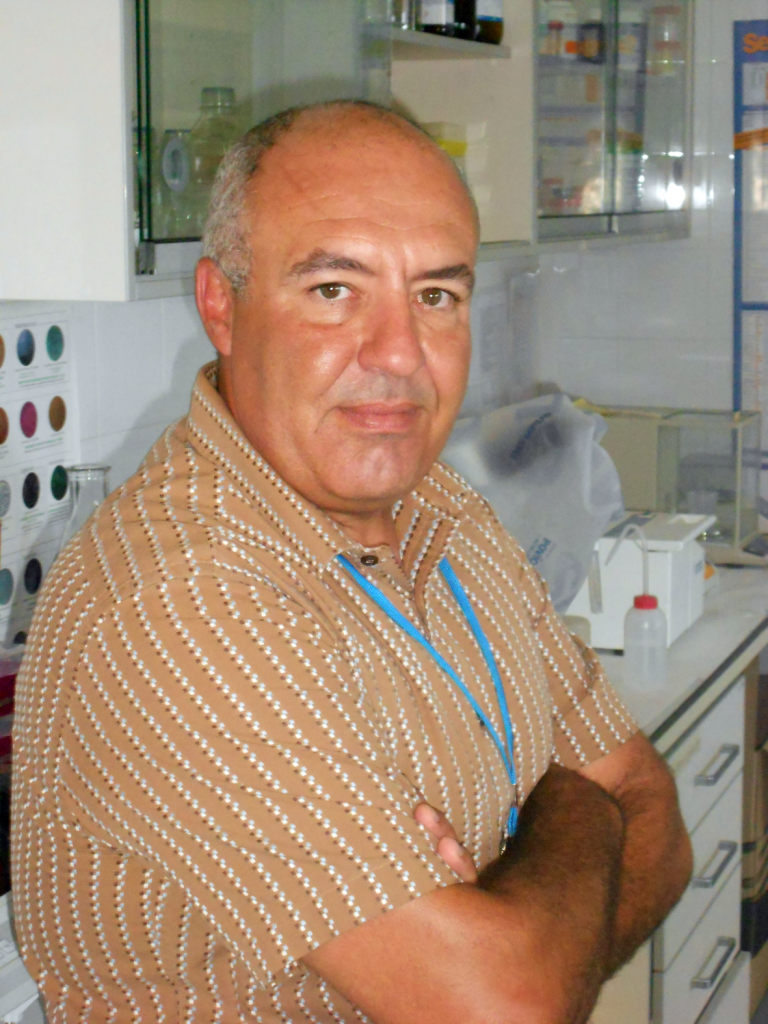
News & Views
Hatchery Operations
Research
Study says peracetic acid is safe and effective disinfectant for aquaculture
June 20, 2022 By Ruby Gonzalez
 “Correct and safe disinfection is essential in a modern aquaculture that aims to be economically profitable and ecologically sustainable,” said Dr. Félix Antonio Acosta Arbelo, professor at the University of Las Palmas de Gran Canaria in the Canary Islands, Spain. (Photo: University of Las Palmas de Gran Canaria)
“Correct and safe disinfection is essential in a modern aquaculture that aims to be economically profitable and ecologically sustainable,” said Dr. Félix Antonio Acosta Arbelo, professor at the University of Las Palmas de Gran Canaria in the Canary Islands, Spain. (Photo: University of Las Palmas de Gran Canaria) Results of a study on using peracetic acid (PAA) as disinfectant for gilthead seabream (Sparus aurata) juvenile have positive implications in its use as a routine disinfectant in aquaculture.
“As we presented in a previous work, PAA is shown to be very effective in controlling pathogens in aquaculture and especially in controlling the biofilms that they form and perpetuate pathogens in many facilities,” corresponding author, Dr. Félix Antonio Acosta Arbelo, told Hatchery International.
“In the current work, the approach is to see the effect on the fish that receive these treatments and it seems that the results, as is happening in other fish species, make PAA a safe and effective disinfectant for the aquaculture industry.”
The study, published on Aquaculture Reports, observed how seabream coped with oxidative stress induced by PAA. Although the disinfectant triggers a mild stress response, authors said the response reflected that it can be used for seabream in the concentration tested with no severe physiological consequences. The mild response to stress had a fast and effective recovery of basal levels after 24 hours. PAA exposure did not induce an important antioxidant response in fish.
Seabream is able to adapt its mucosal and systemic response after exposure to 0.001 per cent PAA.
PAA has been cleared by the European Union Commission as disinfectant for use in animal health care. Although PAA use as a disinfectant in seabream aquaculture has been recognized for its relevant advantages over other biocides, the study cited that information on the effect of this strong oxidant in fish is still scarce. It is important to establish data showing that the biocidal produces no harmful effects on fish that can compromise health and welfare of fish.
PAA has unique, as well as practical, properties as disinfectant in aquaculture. “Peracetic acid stands out compared to other disinfectants because it has a broad bactericidal capacity and is also valid as a virucide and fungicide. In addition, it offers excellent results at a relatively low cost and does not generate toxic waste or harm the environment,” Acosta explained.
As in terrestrial farms, biosafety is also essential in aquaculture. Acosta’s team focused on seabream, because it is a widely established species in the Atlantic and Mediterranean environment, where the research was conducted. “But regardless of the species, correct and safe disinfection is essential in a modern aquaculture that aims to be economically profitable and ecologically sustainable,” he said.
The study was conducted by the Aquaculture Research Group, University of Las Palmas de Gran Canaria in the Canary Islands, Spain, in collaboration with Nord University of Norway.
Print this page
Advertisement
- Temperature effects on Atlantic salmon performance and maturation in freshwater RAS
- Benchmark reorganizes its marketing teams for Atlantic salmon division





